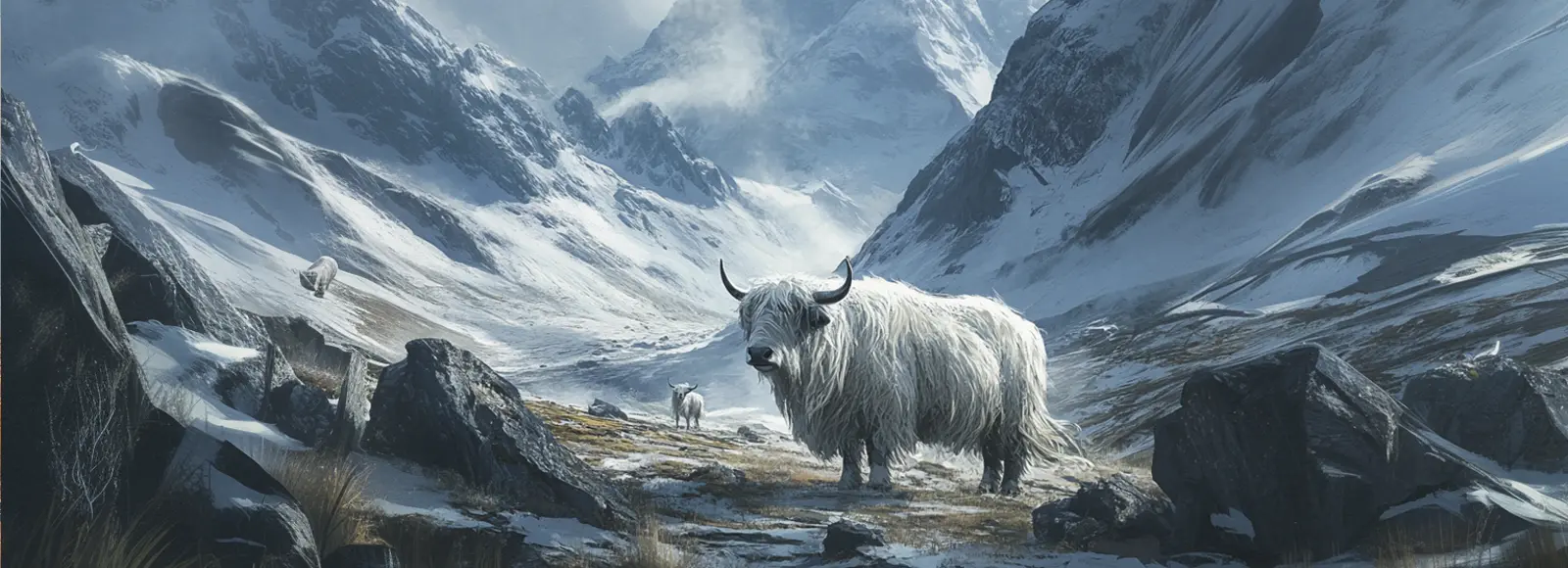Plateau Cattle
Such gentle and majestic beasts! Those tongues of theirs are rather freaky, though.
Origins
Bred to survive in cold and harsh environments, the precursors of the plateau cattle are believed to have been introduced into the world a few centuries prior to the Explosion at Athe, a cataclysmic event that transformed their native land into the sharp plateau that it is today. The violent shattering of the mountains had nearly resulted in their absolute extinction, but with the newfound importance of Athe as a holy city for Hillenēq Hūril and the influx pilgrims that travelled to the region, clerics of the Alstiseriaic of Athe saw value in the animals as a vital source of food and fur, managing to prevent their demise. Over the centuries, the animals have learned and evolved to adapt to their new surroundings, seeking out food from sources previously inaccessible with their long and flexible tongues that can reach deep within the cracks in the ground. Some of these cracks are also a source of warmth due to geothermal activity, meaning that they’re both easy to find, as the snow around the crack is melted, and that’re filled with all manner of various insects, making them the perfect targets for hungry cattle.Essential Livestock
Herds of plateau cattle are carefully managed by herders who ensure the stability of their population in the Plateau of Athe. With how difficult it is to find reliable sources of food, the animals are allowed to roam in relative freedom, ensuring that they can cover as much land as possible in search of sustenance. The herders then track the cattle on horseback, usually with the help of dogs who can independently keep an eye out on them and fetch the herders once enough time has passed.Milk and Meat
Animal husbandry is one of the few ways that the people of Athe can produce food on their own, although they’ve never been fully self-sufficient and rely on foreign imports to feed the country’s small population that consists mostly of clerics, soldiers, and pilgrims. The plateau cattle are primarily bred for their meat, but their milk is fine as well. They just don’t produce a lot of it compared to other types of cattle.Warm Fur
The white fur of the plateau cattle makes for excellent clothing for surviving up high in the freezing mountains. Pilgrims and other travellers traversing through the region often end up purchasing apparel made from the material, bringing them home with them as a warm reminder of their adventures. The various military holy orders that operate out of Athe are also clad in white cloaks made from the fur.
Scientific Name
Gaquqmām al Athe
Lifespan
14 - 22 years
Average Height
95 - 120 cm
Average Weight
600 - 800 kg
Average Length
1.5 - 2 m
Geographic Distribution






I love them and their long tongues. Interesting that they eat insects too!
Explore Etrea | WorldEmber 2025